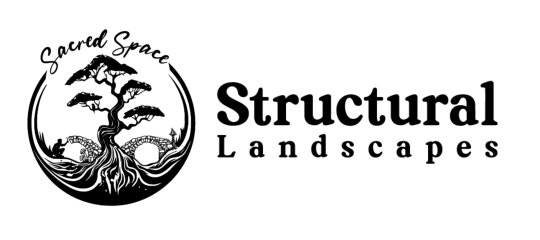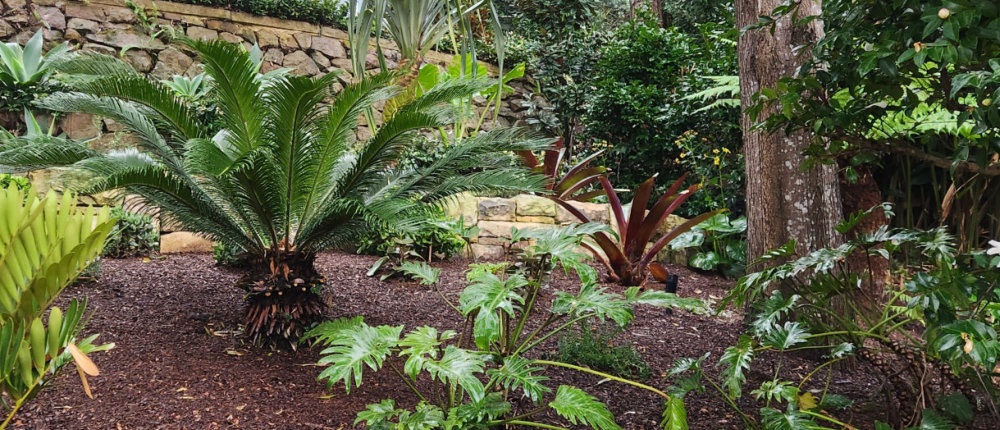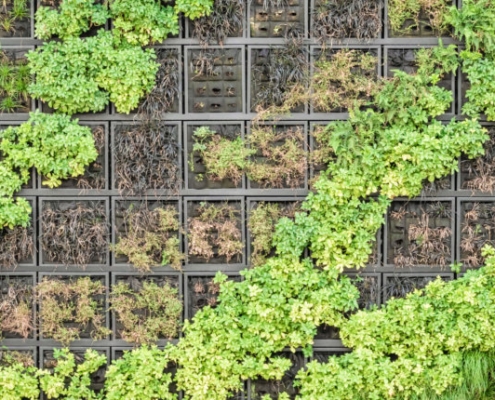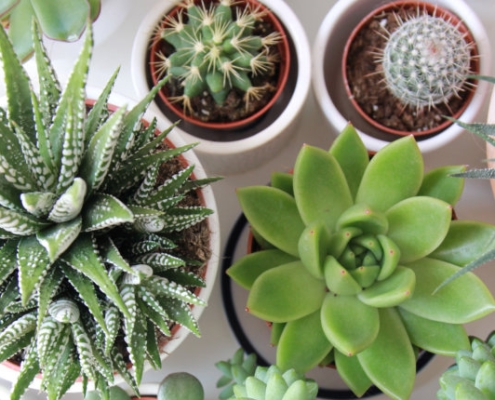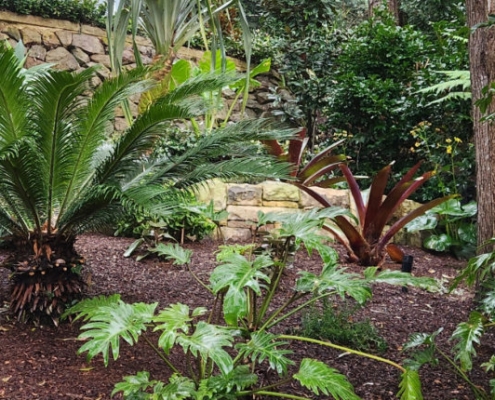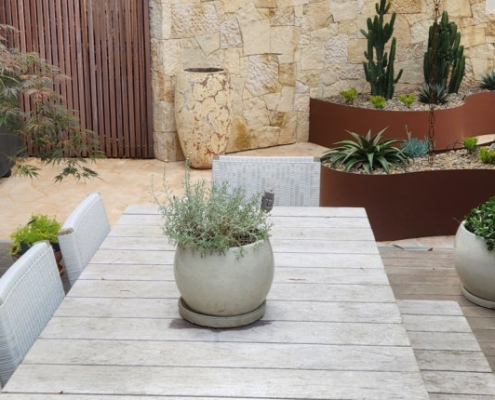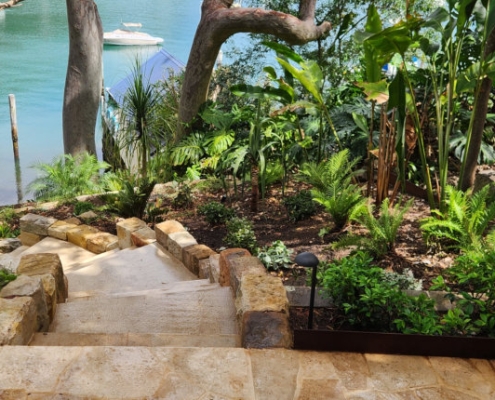Creating Balance in Garden Design: A Harmony of Elements
In the intricate world of gardening, the careful selection of plants goes beyond mere aesthetics; it involves a thoughtful consideration of texture and contrast.
Picture it as choosing the right ingredients for a delicious recipe. Plant textures, whether they’re smooth or rugged, and the way different plants stand out against each other, known as contrast, act as the artists in your garden, crafting a visually pleasing masterpiece.
Texture adds a unique touch, allowing you to feel and appreciate the plants, while contrast ensures each plant stands out, creating a harmonious and engaging garden. Together, these elements bring your outdoor space to life, turning it into a canvas of natural beauty.
Understanding Texture in Garden Design
A. Definition of Texture in the Context of Gardening
Texture in gardening refers to the visual and tactile qualities of plant surfaces, including leaves, flowers, and stems. It’s the perceived smoothness, roughness, or coarseness of these elements that contribute to the overall sensory experience of a garden. In simple terms, it’s the difference you see and feel when you touch the various plants in your garden.
Texture is a key design element that adds depth and interest to your outdoor space. It goes beyond colour and form, providing an additional layer of richness and complexity to the visual tapestry of your garden.
Whether it’s the soft, velvety leaves of lamb’s ear or the spiky, robust foliage of a yucca plant, each contributes a unique texture that enhances the overall aesthetic.
B. Different Types of Plant Textures (e.g., Fine, Medium, Coarse)
Understanding plant textures involves recognizing the size and arrangement of the various components of a plant. Here are the three main categories of plant textures:
Fine Texture
Plants with fine texture have small, delicate leaves or flowers. They often create a sense of lightness and airiness in the garden. Examples include ornamental grasses, ferns, and delicate flowering plants like baby’s breath.
Medium Texture
Plants with medium texture have leaves or flowers of moderate size. They form a middle ground in terms of visual weight and can serve as transitional elements in the garden. Examples include many common shrubs like azaleas and hydrangeas.
Coarse Texture
Coarse-textured plants have large, bold leaves or flowers. They tend to be visually heavy and can act as focal points in the garden. Examples include large-leaved plants like hostas or plants with prominent blooms like sunflowers.
A well-designed garden often incorporates a mix of these textures to create balance and variety. Combining fine, medium, and coarse textures adds visual interest and prevents the garden from appearing one-dimensional.
C. How to Use Texture to Evoke Different Feelings or Moods in the Garden
The choice of plant texture plays a crucial role in shaping the emotional experience of your garden. Here’s how you can use texture to evoke different feelings or moods:
Serene and Calm
Fine-textured plants, with their delicate foliage and subtle blooms, can create a sense of tranquillity. Consider incorporating plants like ornamental grasses and wispy perennials for a serene and calming atmosphere.
Energetic and Dynamic
Coarse textures, characterized by bold foliage and vibrant blooms, can infuse energy into the garden. Plants like cannas, elephant ears, or large-leaved hostas contribute to a lively and dynamic ambience.
Harmonious and Balanced
A mix of fine, medium, and coarse textures can achieve a harmonious and balanced garden. Combine plants strategically to create a visually appealing composition that engages the viewer without overwhelming the senses.
Utilizing Contrast for Visual Impact
A. Definition of Contrast and Its Role in Garden Design
In the language of garden design, contrast is the artful use of differences to create visual interest and impact. It’s the technique that makes certain elements stand out by highlighting variations in colour, form, or size. Essentially, contrast is the secret ingredient that adds drama and excitement to your garden, ensuring that each plant and feature captures attention in its own unique way.
B. Contrast in Color, Form, and Size
Colour Contrast: This involves pairing plants with distinct colours to make them pop against each other. For instance, a vibrant yellow flower next to a deep green backdrop creates a striking visual contrast. The key is to choose colours that enhance each other, creating a harmonious yet attention-grabbing palette.
Form Contrast: Varying the shapes and structures of plants contributes to an engaging garden. Combining the spiky form of an ornamental grass with the rounded shape of a shrub, for example, creates a dynamic contrast that adds visual intrigue.
Size Contrast: Playing with plant sizes adds depth to your garden. Pairing tall, imposing plants with low, spreading groundcovers, or placing large-leaved specimens alongside delicate flowers, establishes a sense of balance and focal points within the landscape.
C. Examples of Plant Combinations that Create Effective Contrast
Drama in Hues
Combine the rich burgundy foliage of a Japanese maple with the delicate, variegated leaves of a silver-leafed plant for a striking colour contrast.
Textural Interplay
Pair the feathery texture of ornamental grasses with the bold, architectural leaves of yucca plants to create a captivating textural contrast.
Height Dynamics
Planting tall, slender cypress trees against a backdrop of vibrant, low-growing perennials can create a captivating contrast in height, drawing the eye upward.
By understanding and strategically employing these forms of contrast, you can transform your garden into a visually dynamic and aesthetically pleasing space.
The Role of Foliage in Adding Texture and Contrast
A. Importance of Foliage in Creating Visual Interest
Foliage, often overshadowed by vibrant blooms, plays a crucial role in garden design by providing a continuous canvas of colour and texture throughout the seasons. Unlike flowers that have a more ephemeral presence, foliage offers a long-lasting visual impact, contributing to the overall character and appeal of your garden.
B. Different Foliage Textures and Colors
Textural Diversity
Foliage comes in a myriad of textures, ranging from the fine, lacy leaves of ferns to the broad, sturdy leaves of hostas. Incorporating a variety of textures adds depth and complexity to your garden.
Colour Palette
Foliage exhibits an extensive range of colours beyond the classic green. Plants with variegated leaves, silver-grey hues, or deep purples contribute to a diverse and visually stimulating colour palette.
C. Selecting and Combining Plants for Diverse Foliage Effects
Contrasting Textures
Combine fine-textured grasses with bold-leaved plants like elephant ears for a textural interplay that adds interest and dimension.
Colour Harmony
Pair plants with complementary foliage colours to create a harmonious yet visually engaging composition. For example, the soft blue-green leaves of succulents can beautifully complement the warm tones of coppery foliage.
Seasonal Variation
Select plants with foliage that changes colour or texture throughout the seasons to ensure year-round visual interest. Plants like coral bells (Heuchera) with their ever-changing foliage colours are excellent choices.
Incorporating Hardscape Elements for Contrast
A. Introduction to Hardscape Elements (e.g., Rocks, Pathways, Structures)
In the art of garden design, hardscape elements are the silent architects, providing structure and framing the living canvas of plants. These elements include rocks, pathways, structures like pergolas or statues, and any non-living features that contribute to the physical layout of the garden. While plants breathe life into the space, hardscape elements serve as the sturdy backbone, shaping the overall aesthetic and guiding the flow of the garden.
B. How Hardscape Elements Contribute to Contrast in the Garden
Textural Contrast
Rocks, with their rugged surfaces, can stand in stark contrast to the softness of plant foliage. A gravel pathway, when juxtaposed with lush greenery, introduces a textural interplay that enhances visual interest.
Structural Contrast
Incorporating hardscape structures provides an opportunity for striking visual contrast. A sleek, modern sculpture set against a backdrop of traditional shrubbery creates a captivating clash of forms, adding an element of surprise to the garden.
Colour Dynamics
The colours of hardscape elements, such as the hue of stones or the material of structures, can contrast or harmonize with the surrounding plant palette. For instance, dark paving stones may accentuate the vibrant colours of flowers, while light-coloured structures may provide a subtle backdrop.
C. Tips for Integrating Hardscape Elements Seamlessly
Balance and Harmony
Aim for a balanced integration of hardscape elements to avoid overwhelming the natural elements of the garden. Achieve harmony by selecting materials and structures that complement the overall style and theme.
Guided Pathways
Use pathways to guide the eye and create a sense of order within the garden. Curving paths can soften the rigid lines of structures, while straight paths may lead the gaze towards specific focal points.
Natural Transitions
Ensure a smooth transition between hardscape and softscape. Soften the edges of pathways with creeping plants or strategically position rocks amidst flower beds to facilitate a seamless blend between the natural and constructed elements.
Consider Scale
Maintain proportionality between hardscape elements and the surrounding plants. Large boulders may overpower smaller plants, while diminutive structures might get lost amidst towering trees. Strive for a sense of scale that complements the overall design.
Seasonal Adaptation
Choose hardscape elements that withstand the changing seasons. For instance, materials that endure winter frost or summer heat contribute to the garden’s longevity and ensure year-round appeal.
Selecting the right mix of plants, colors, leaves, and hard features is important for a beautiful garden. It’s not just about each thing on its own but how they all fit together. When they match well, the garden becomes a quiet and inviting spot. It’s like forming a good team where each member has a task, and the result is a lovely outdoor space that lets you appreciate the beauty of nature.
